
© Foteini Christofilopoulou, courtesy the Royal Opera House. (Click image for larger version)
Royal Ballet
The Royal Ballet Live: Within the Golden Hour
★★★★★
London, Royal Opera House
Streamed 13 November 2020 and available until 13 December 2020
Gallery of pictures by Foteini Christofilopoulou
www.roh.org.uk
Intended for a live paying audience, the third gala format programme by the Royal Ballet had to be streamed instead. There was an audience, however, acknowledged by artistic director Kevin O’Hare in his welcoming speech as ‘our Royal Ballet colleagues’. Their hearty applause met with friendly smiles from the performers as they took their formal bows and révérences.
Lighting by Simon Bennison for the cameras was far more atmospheric than for previous live performances on a bare stage. Close-ups had the benefit of revealing vivid facial expressions, as well as occasional beads of sweat. Nothing, however, beats the thrill of being present in the theatre as dancers accomplish what they’ve set out to do, after hours of rehearsal. Yes, you can replay a recording and marvel – yet being able to experience collective reactions of awe, surprise or joy in the moment is special.

© Foteini Christofilopoulou, courtesy the Royal Opera House. (Click image for larger version)
In this selection of treats, there was one new work, Valentino Zucchetti’s Scherzo, first glimpsed in rehearsal during World Ballet Day filming. Set to the second movement of Rachmaninoff’s Symphony no 2, Scherzo deploys 16 mainly junior members of the company in music whose moods and tempi vary rapidly within its ten minutes duration. Though Zucchetti, a First Soloist in the company, is an experienced choreographer, this is his first work for the main stage. He provides intricate overlapping passages for boisterous male and speedy female ensembles. There’s time for one, then two pas de deux, with a spring-loaded soloist, Taisuke Nakao, threading his way through the brief ballet. Leticia Dias, leader of the feisty ladies, ends the piece on an impish note as the music fades away.

© Foteini Christofilopoulou, courtesy the Royal Opera House. (Click image for larger version)
In between Scherzo and Christopher Wheeldon’s concluding Within the Golden Hour came repeats from previous onstage concerts, several with different casts. The pas de deux from Kenneth MacMillan’s Concerto had been performed during the first lockdown period by Fumi Kaneko and Reece Clarke in practice dress: here it was danced by Yasmine Naghdi and Nicol Edmonds in costume, with the ballet’s orange orb glowing behind them. They moved enraptured by Shostakovich’s second piano concerto, played by Kate Shipway and The Royal Opera House orchestra, conducted by Jonathan Lo. Naghdi’s legs and arched feet became finely calibrated instruments delineating the choreography, with Edmonds rock steady in support.
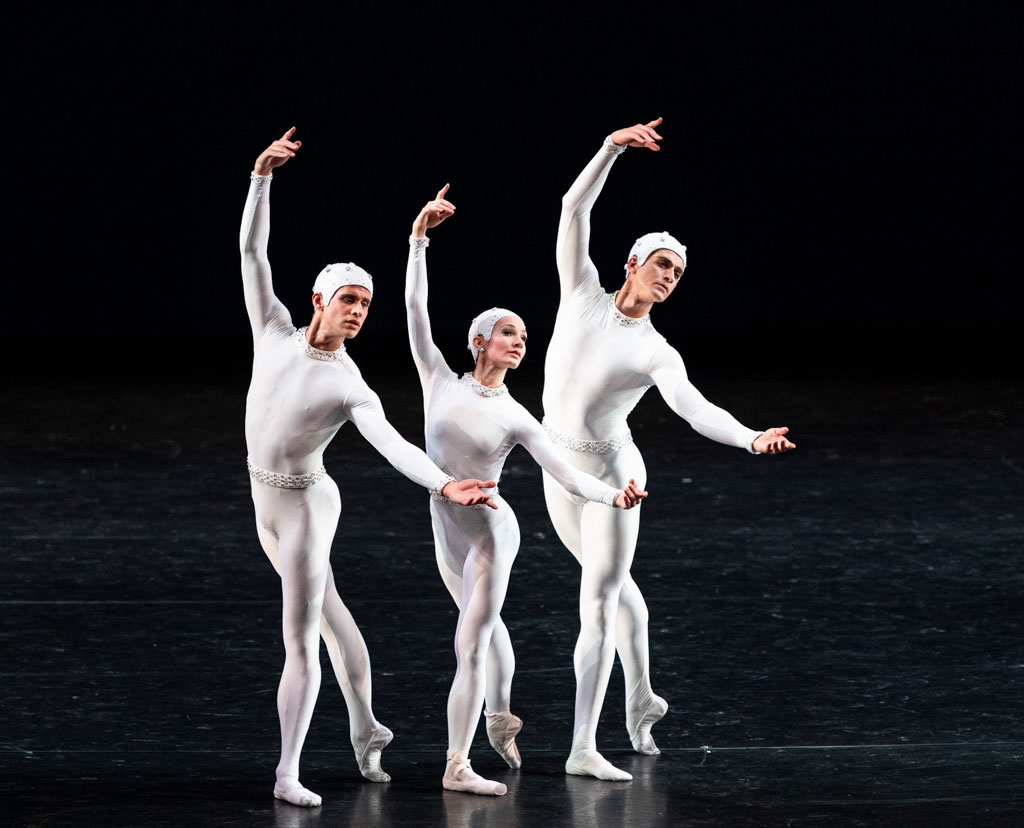
© Foteini Christofilopoulou, courtesy the Royal Opera House. (Click image for larger version)
Their serene control matched that of the trio in Ashton’s Monontones II, this time performed by Melissa Hamilton, Reece Clarke and Edmonds. They were illuminated to appear suspended in outer space, gleaming moon-white in the darkness. The two tall men handled Hamilton as a precious treasure to be shared between them, her dreaming glances acknowledging them both.
Another cast change came in Cathy Marston’s In Our Wishes, her version of the adulterous love affair in Chekov’s The Three Sisters. Sympathetically filmed by Peter Jones in close up, Romany Pajdak’s distress at having to lose her lover was more heart rending than Fumi Kaneko’s repressed emotion in the same role the previous week. Pajdak revealed herself as a compelling dancer. Calvin Richardson was less stoic than Clarke had been as the man compelled to leave the woman crumpled in despair.

© Rachel Hollings, ROH. (Click image for larger version)
Unchanged and as excellent as before were Akane Takada and Alexander Campbell in the pas de deux from Ashton’s Rhapsody, and Laura Morera and Federico Bonelli in the Act I pas deux from MacMillan’s Manon. Francesca Hayward danced the Swan Lake pas de deux with César Corrales instead of William Bracewell as Prince Siegfried. Surprisingly, she showed less rapport with Corrales, executing the choreography beautifully without portraying Odette’s growing trust, as she had with Bracewell.
Natalia Osipova certainly had a story to tell as The Dying Swan. Stricken, she strived to fly again, calling on the power of her wings even as her beating arms failed in strength. Hands fluttering to the plaintive notes of the piano, she defied death to the last, flailing in her final throes. Hers is a more extravagant account than the version performed by Claire Calvert in last week’s gala programme. The ‘English’ convention has the doomed swan ballerina drifting in faltering bourrées before expiring with a sigh, hands crossed over outstretched foot.
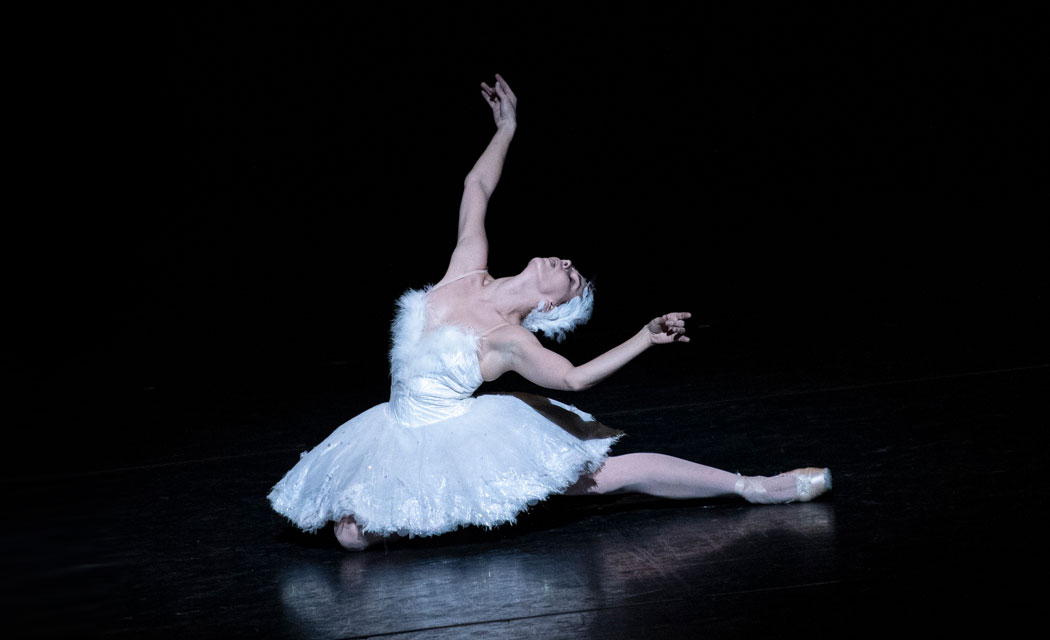
© Foteini Christofilopoulou, courtesy the Royal Opera House. (Click image for larger version)
Scraps of film footage of Anna Pavlova dancing her signature role are tantalisingly inconsistent. No definitive version of the solo exists, so dancers give varying interpretations, some claiming the role as their own, as Maya Plisetskaya did until well into her sixties. Once seen, the Trocks’ moulting Ida Neversayneva (Paul Ghiselin) remains unforgettable, as Osipova’s defiant swan may prove to be.
There’s no definitive version of the gala pas de deux from Le Corsaire, performed as a pas de trois in the full-length ballet. The music, attributed to Minkus or Drigo, may be appropriated from another ballet entirely, like sections of the choreography. All that matters is that the ballerina shows off her technique, usually including many multiple fouettés, and her partner astonishes with magnificent leaps and spins à la seconde.
Marianela Nunez and Vadim Muntagirov obliged with delight. Close-ups show how attentively he watches her and how assured she is that he’ll stop her pirouettes exactly on the music. She brings off a tilt of the head during the trickiest of spinning combinations, looking over her shoulder at the audience as she tours the stage. Muntagirov tucks both legs under him as he revolves in mid-air, hanging for a moment before landing without a sound. Though flamboyant presentation has not been his natural style, he knows how to give a gala performance.
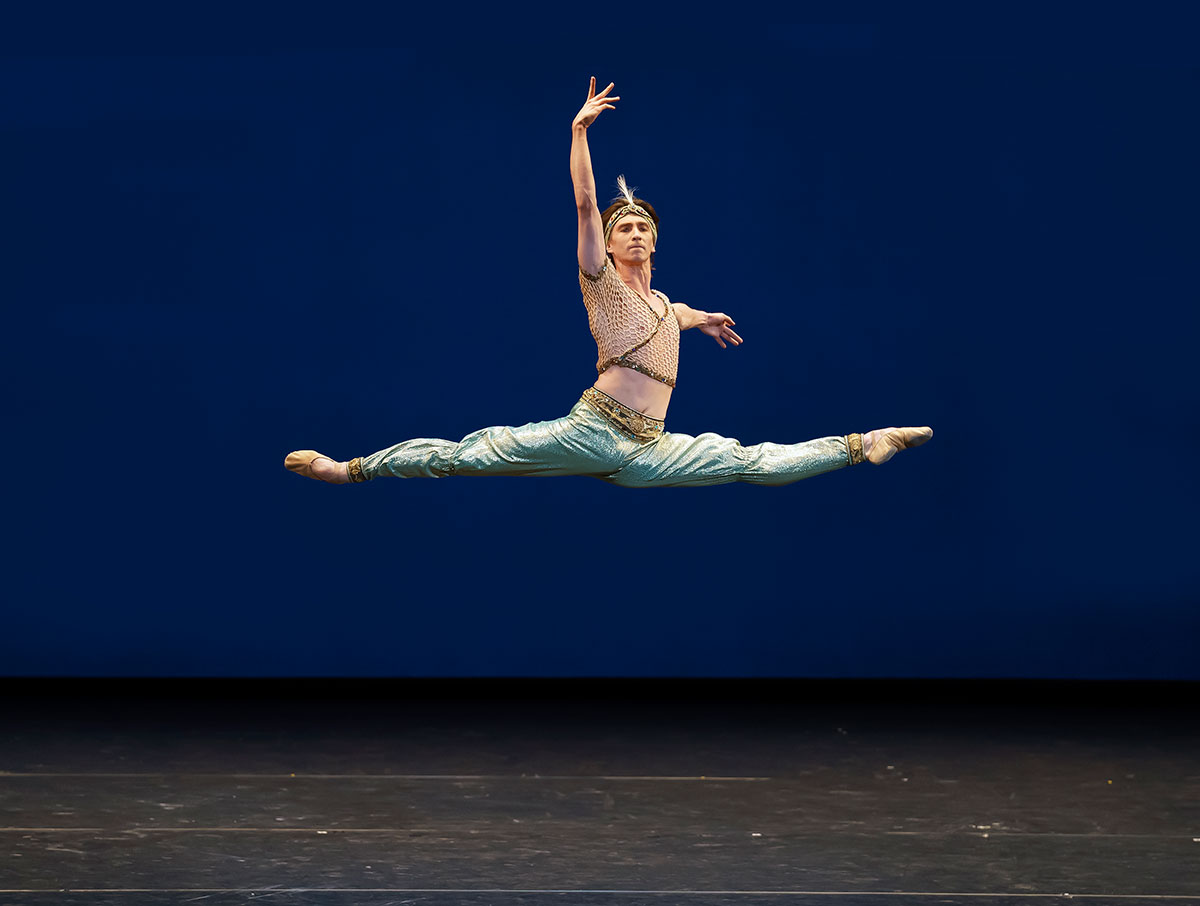
© Emma Kauldhar, courtesy the Royal Opera House. (Click image for larger version)
Balanchine’s Tchaikovsky pas de deux, which he and Nunez had performed in the previous gala programme, was given to youngsters Anna Rose O’Sullivan and Marcelino Sambé, who have danced it before. He bounces and rebounds from every jump while she times each pose precisely on the music. She hasn’t yet found the grace notes that Nunez does so well, using her upper body in contrast with her fleet footwork. O’Sullivan’s discernable tension had vanished by the time she was able to have fun in a duet with James Hay in Within the Golden Hour.
Wheeldon’s ballet to Ezio Bosso’s music is playfully episodic, a series of vignettes rounded off with a finale filled with reprises. Made for San Francisco Ballet in 2008, it was originally costumed in designs by Martin Pakledinaz that suggested temple dancers. There are traces of orientalisms in the choreography, while redesigns by Jasper Conran transform the cast of 14 into glistening beings making the most of their ephemeral time in the sunlight.

© Foteini Christofilopoulou, courtesy the Royal Opera House. (Click image for larger version)
Three duets stand out as courtship rituals. The quirky one for O’Sullivan and Hay has them stepping out together as far-from-socially-distanced playmates. Then Fumi Kaneko and Reece Clarke intertwine to woozy ‘bagpipe’ sounds from the strings. (The pas de deux had previously been performed by Mayara Magri and Matthew Ball in the third of the ROH streamed concerts back in June.) In the third, slow motion duet, Sarah Lamb appears to be a mermaid floating above and around Ryoichi Hirano.

© Foteini Christofilopoulou, courtesy the Royal Opera House. (Click image for larger version)
Two men, Téo Dubreuil and David Donnelly, challenge each other in swift counterpoint. A quartet of women, Ashley Dean, Isabella Gasparini, Hannah Grennell and Pajdak, sway on point with angular arms and curved wrists. In the final section, all 14 share their material, glowingly lit in perpetual motion as the curtains close. Their world remains undimmed. As Wheeldon said in an interview about his choice of title, ‘Everything is lifted by this golden hour’ – and that includes our spirits.
Thank you, Royal Ballet, for giving so much pleasure in trying times.












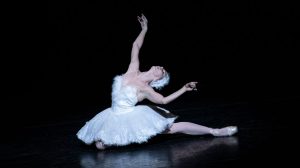
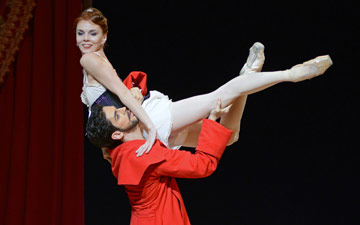
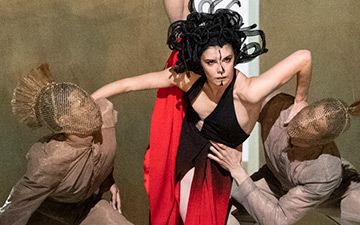

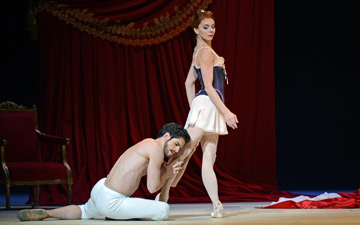
Valentino Zucchetti is a first soloist. Not a first artist.
Duh. My fault – I did a check and clearly did it badly! Apologies to all. Ed.